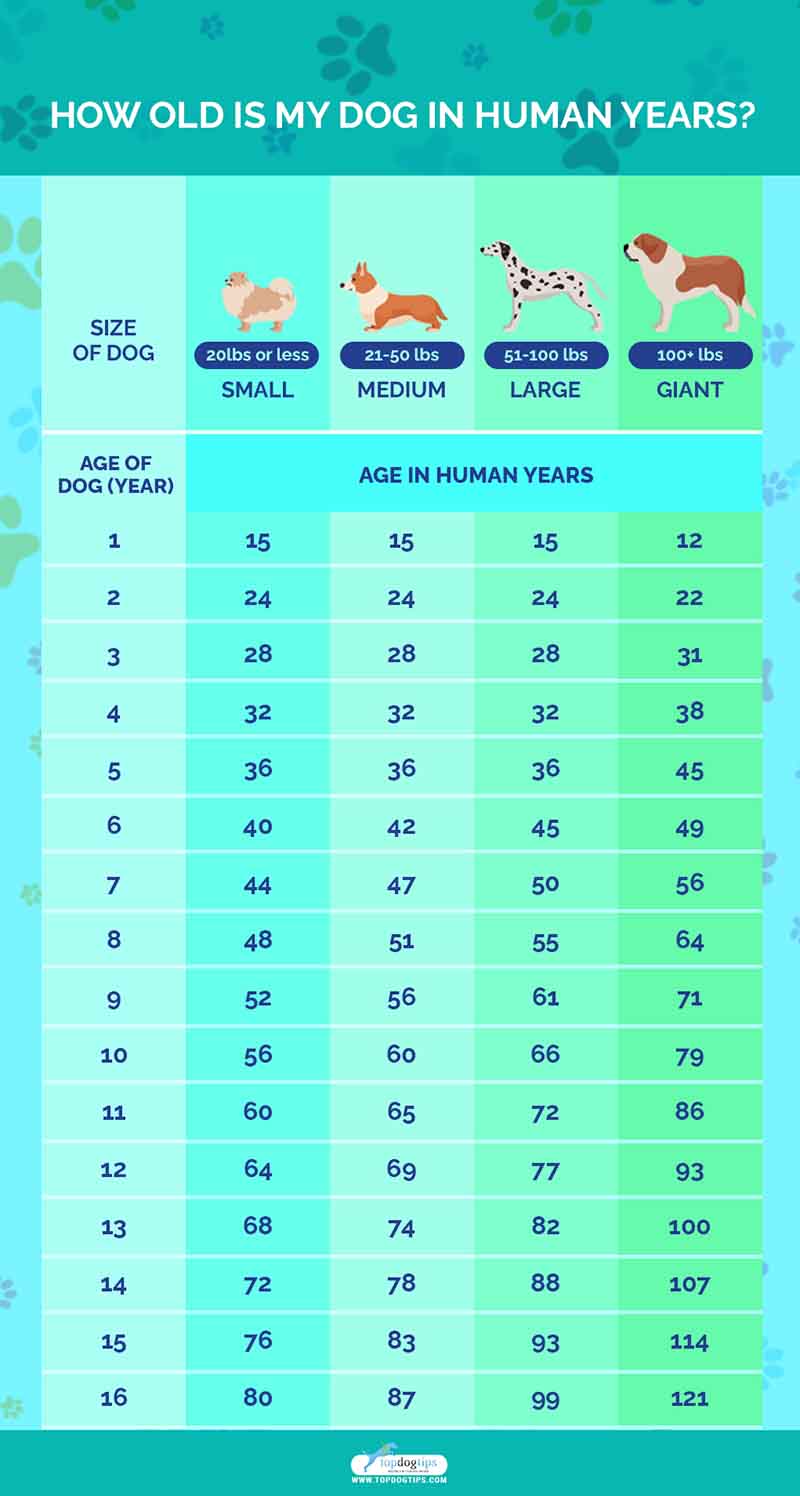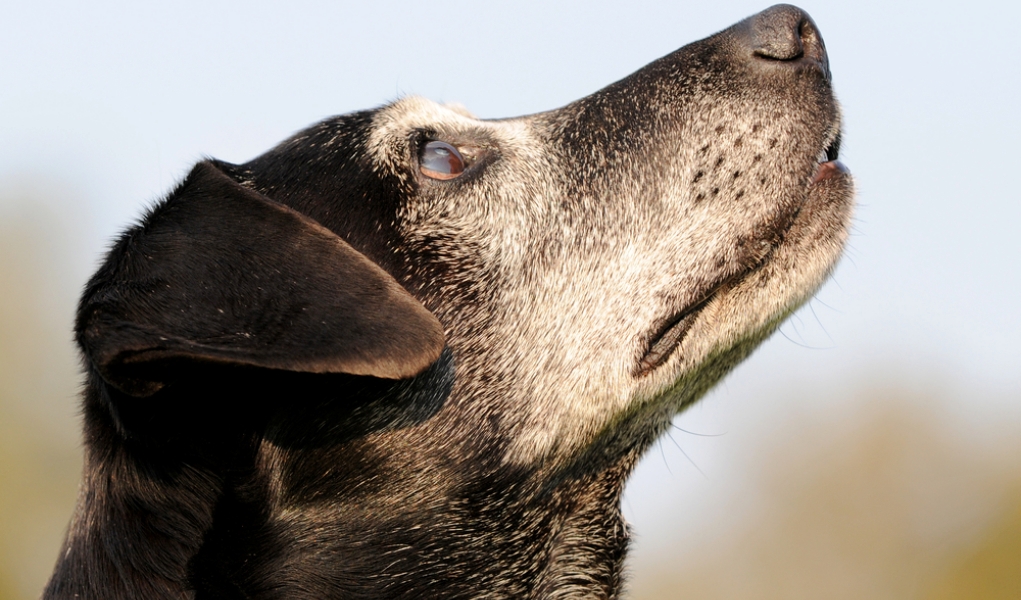Table of Contents
Knowing an estimate of your dog's age is important for a number of reasons.
Knowing how old a dog is will help you to provide the best care possible, from food choices to exercise options.
It's not uncommon to ask, how old is my dog?
But, it is virtually impossible to get a very precise answer to this question.
Chances are, if you adopted your dog from a rescue or shelter, you know his approximate age.
Veterinarians will examine the dog before adoption and make an estimated guess as to how old the dog is.
Still, it's not an exact science.
Rescued pets don't usually come with a lot of information about their history.
Knowing their age can help you decide what diet is best for them, how much exercise they will require, what type of supplements they need and how to provide proper veterinary care.
How Old Is My Dog?
Dog years to human years myth
Everyone grew up thinking that every year your dog is alive equates to 7 human years.
Although dogs age faster than you do, it's not that straightforward.
Actually, it's more like the first year around the sun is equivalent to fifteen human years.
The second year for a dog's age is about nine years. Which means by two they are already about 24 years old.
Every year after that is equivalent to about five human years as they become older dogs.
It starts to get a little more complicated for dogs depending on their size. Which is why we have put together a chart for you.

A dog's age depends on their size
So, now that we have that first part out of the way there's other factors that determine their age that we will get to in a bit.
Next, let's talk about a dog's size.
A second “tail” that we may have been told was that smaller breeds live longer than large dogs.
Well, that is actually true!
In fact, small breed dogs age slower and are only considered senior dog breeds after seven human years, whereas larger dogs are considered senior dogs after five years of age.
Dog's Life Expectancy Depending on breed and Size
- Small breed dogs: 10-15 years of age
- Medium sized dog: 10-13 years of age
- Larg dog breeds: 9-12 years of age
- Giant breeds (These are the Great Danes and Mastiffs of the world): 8-10 years of age.

1. Teething Stages
Teeth are first thing you should check when trying to figure out your dog's age because a dog's teeth are a great indicator of their age.
Puppies are usually fairly easy to spot, but their teeth can tell you what stage of puppyhood the animal is in.
If your dog is an adult, his teeth can help you narrow down an approximate age.
Your dog's permanent teeth will come in at around 5 months of age.
The back molars are the last to come in at around 5-7 months.
If your dog has all of his permanent teeth, you'll know that he is not a young puppy.
At about 1 year of age, you will begin to notice bumps and ridges developing on the top of the front teeth.
Between 3-4 years of age, after all of their adult teeth have been grown in for awhile, these bumps and ridges will be about 1/2 worn down.
During this stage of life, you will also notice tartar beginning to build up in adult dogs.
Note: Keep in mind that dogs who chew aggressively have been abused or have dental health issues may have worn these bumps and ridges down earlier than the average dog.
2. Teeth Health
Tartar buildup on a dog's teeth will get thicker and darker as the dog ages.
You will notice the brownish tartar build up on the canine teeth in the photo above.
By the time your dog is 7 years old, the bumps and ridges on the top of his front teeth will be completely worn down.
If the top of a dog's front teeth are flat, he is probably well into his adult years.
Cracked or loose teeth is another sign of aging in dogs.
Just remember that these dental health problems could also be caused by poor nutrition, abuse or early onset dental disease so you would need to rule those out first.
3. Signs of Arthritis
Another sign that your dog is aging could be joint pain and mobility issues.
These problems could also be due to an injury or health condition, so be sure to have your dog evaluated by a veterinarian if you notice any discomfort.
However, in many cases, signs of joint pain and arthritis can be easily distinguished in a dog.
Given how primarily senior dogs only will suffer from this degenerative disease, it's likely that an arthritic dog is 6 years or old.

4. Check the Eyes
Certain condition of eyes on a dog can be a somewhat reliable way to tell a dog's age.
For example, cloudy eyes is generally a sign of aging in dogs.
If your dog's eyes look cloudy like in the above picture, he is likely a senior dog.
Like with other signs, this could also mean that the dog has cataracts or other eye problems, so be sure to mention this problem to your vet.
5. Fur Condition
You may also be able to answer the question how old is my dog by looking at your pet's skin and coat.
Lightening of the fur will occur as a dog ages.
If you notice white or light fur around the dog's eyes, muzzle or chest area, it could be a sign that he is reaching the senior stage of life. Lightening of the fur may also be the result of stress and anxiety in dogs.
In conclusion, if you haven't already noticed, none of these suggestions are 100% accurate and it's not easy to tell how old a dog is by yourself.
The best thing that you can do is to observe your dog's behavior, evaluate his appearance and try to put all of the information together to form an educated guess of your dog's age or consult with a vet.
How To Care For Your Dog Based On Age
As our furry best friends get older, we wished they would just become wiser.
Fortunately, younger dogs, for the most part, are devoid of health issues as long as they are kept on a complete and balanced diet, get regular exercise, and up to date on their vaccines.
But, sadly with age comes with age-related illnesses.
Keeping that in mind, make sure in case of emergencies you have some money set aside JUST IN CASE.
And if you don't have insurance, link up with one of the pet insurance companies out there. You'll be glad you did when a vet visit starts to cost in the thousands.
Outside of that, we must develop more patience and empathy as our dog gets older.
I've already addressed some of the physical traits that show signs of aging above, but let's talk about how to care for them during this time.
As you know dog's face these common age-related illnesses sooner rather than later:
Joint Problems
Older dogs commonly develop joint issues like arthritis.
You'll want to make sure you adjust your living space that accommodates this health issue.
One of the easy things to do is address the floor situation. Most people I know have floors that are tough for older dogs to keep their balance on, and they end up slipping and falling.
This is a brutal one because the falling and sliding only exacerbates their joint problems.
Recently, I discovered a lady that goes by the name Dr. Buzby.
She explains that togs use their nails for support and balance.
She invented a product called Toe Grips.
Which are great because I don't know anyone that can just change out the floor or tile in their house overnight because their dog keeps slipping.
You can also make sure your dog gets plenty of exercise and supplement their food with fish oil or other joint supplements.
This is great for aging dogs because it slows down the joint deterioration.
Dog's vision begin to go
It's sad but very common.
I mean I've seen it happen to two of my Mom's senior dogs.
They have passed on, but aging dogs can lose their sight.
There's no set rule, but it can happen over months and years and in small cases, overnight.
Fortunately, this can be managed and isn't a death sentence.
There are a few things you can do to manage vision loss.
- spend more time with your dog on flat open ground
- Stay by your dog's side as they explore the world with vision loss
- Believe it or not DON'T MOVE FURNITURE AROUND, once your dog's vision goes they can build a map in their mind where things are.
- Put baby gates in front of your stairs
- You need to be more vocal, speak to your dog more so he or she can rely on your voice
- When you are not home you can leave some music playing. Dog's have amazing hearing and can use that to orient themselves in the room they are in.
Before You Go…
Check out these Related Articles:
- What Are Dog Years? (And How To Know How Old Your Pup Is)
- How To Care For A Blind Dog
- 6 Natural Supplements to Soothe Your Dog’s Joint Pains













